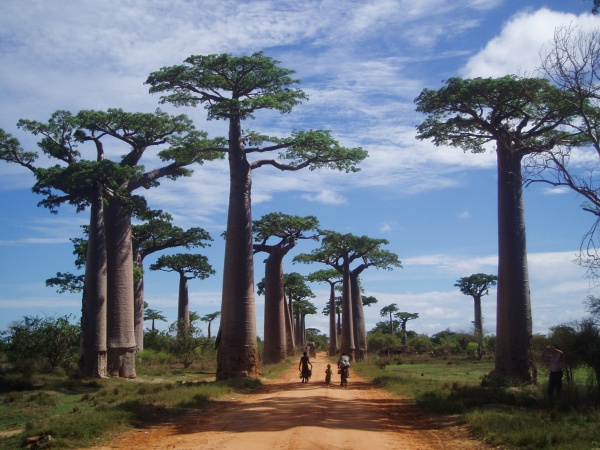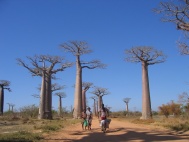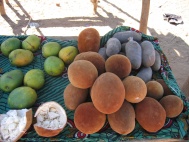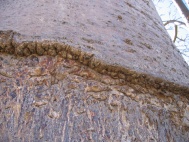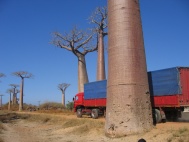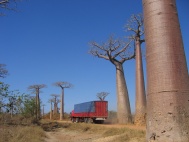Difference between revisions of "Baobab Avenue"
| Line 1: | Line 1: | ||
'''Along a dirt-road some fifteen kilometres north of [[Morondava]], a cluster of baobab trees to the right and left of the roadside form an avenue of proud giants known as Baobab Avenue. The location is a landmark of the region and a symbol of Madagascar and one of the most photographed spots in the country.''' | '''Along a dirt-road some fifteen kilometres north of [[Morondava]], a cluster of baobab trees to the right and left of the roadside form an avenue of proud giants known as Baobab Avenue. The location is a landmark of the region and a symbol of Madagascar and one of the most photographed spots in the country.''' | ||
| − | [[File:Baobab Avenue 011.jpg|600px|none|thumb|Baobab | + | [[File:Baobab Avenue 011.jpg|600px|none|thumb|Baobab Avenue]] |
The [[baobab tree]] is the national tree of Madagascar. Due to its unusual shape, the baobab is sometimes said to be a tree with roots pointing to the sky. According to ancient Arabic mythology, it was the devil who pulled the tree out of the earth and re-planted it upside down. | The [[baobab tree]] is the national tree of Madagascar. Due to its unusual shape, the baobab is sometimes said to be a tree with roots pointing to the sky. According to ancient Arabic mythology, it was the devil who pulled the tree out of the earth and re-planted it upside down. | ||
Revision as of 06:50, 1 April 2011
Along a dirt-road some fifteen kilometres north of Morondava, a cluster of baobab trees to the right and left of the roadside form an avenue of proud giants known as Baobab Avenue. The location is a landmark of the region and a symbol of Madagascar and one of the most photographed spots in the country.
The baobab tree is the national tree of Madagascar. Due to its unusual shape, the baobab is sometimes said to be a tree with roots pointing to the sky. According to ancient Arabic mythology, it was the devil who pulled the tree out of the earth and re-planted it upside down.
The fruits of the baobab are highly nutritious, containing more vitamin C than oranges. The fruit pulp can be eaten directly or mixed with various meals and drinks.
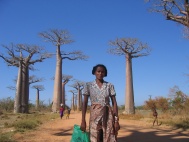 Sakalava woman at Boabab Avenue |
The best time to visit Baobab Avenue are at sunset and sunrise when the colours of the trunks change and the long shadows of the trees are most pronounced. Baobab Avenue can be reached from Morondava by foot, bike or taxi-brousse in the direction of Belo-sur-Tsiribihina. A tiny village and a school are located nearby.
The location is also known as Allée de Baobab, Avenue du Baobab or Adansoinia grandidieri baobabs.
